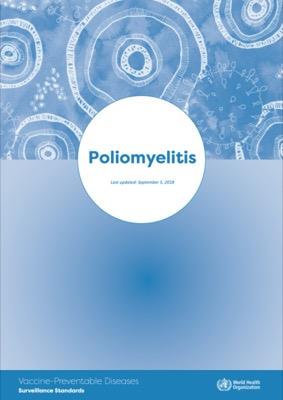Polio: Vaccine Preventable Diseases Surveillance Standards

Overview
Polioviruses are human enteroviruses with serotypes 1, 2
or 3. The incubation period is usually 7–10 days (range
4–35 days). Most people infected with poliovirus do not
have symptoms, though they can still excrete virus in
faeces and, for a shorter time, in saliva. Approximately
one-quarter of those infected develop minor, transient
symptoms including fever, headache, malaise,
nausea, vomiting and sore throat. Some individuals
(approximately 4%) develop a self-limited illness with
signs of meningeal irritation (neck stiffness, severe
headache).
Paralytic poliomyelitis is a rare outcome
and occurs when poliovirus enters the central nervous
system and replicates in anterior horn cells (motor
neurons) of the spinal cord or brainstem. In children
< 5 years of age, it is observed in < 1% of poliovirus
infections.
